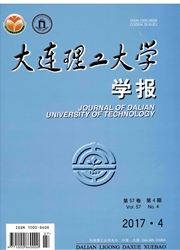

 中文摘要:
中文摘要:
采用共混法在氨水中制备了稳定的碳纳米管颗粒悬浮液(双组分纳米流体),并利用瞬态热丝法测量了不同条件下的双组分纳米流体的导热系数,系统研究了颗粒质量分数、氨水质量分数、温度等因素对双组分纳米流体导热系数的影响.实验结果表明,碳纳米管的加入极大地提高了基础液体-氨水的导热系数.在此基础上,结合已有文献中关于纳米流体导热系数的计算模型对双组分纳米流体的导热系数进行了模拟计算,并对模拟数据和实验数据进行了对比.结果发现,通过对模型参数的调整,微对流模型可以准确计算双组分纳米流体的导热系数.
 英文摘要:
英文摘要:
Carbon nanotubes-ammonia nanofluids ammonia by two steps method. And the thermal (the binary nanofluids) were prepared in aqueous conductivities of nanofluids were measured by the transient hot-wire method. The effects of the mass fraction of carbon nanotubes (CNTs), the concentration of ammonia and temperature on the thermal conductivity of the binary nanofluids were sy th stematically studied. The results show that the addition of CNTs can ermal conductivity of the base liquid-aqueous ammonia. On the basis, the sig th nificantly enhance the ermal conductivities of the binary nanofluids were calculated using the models in the literatures, and were compared with the experimental values. The results show that the micro-convection models can predict the thermal conductivity of the binary nanofluids through adjusting the parameters in the models.
 同期刊论文项目
同期刊论文项目
 同项目期刊论文
同项目期刊论文
 期刊信息
期刊信息
